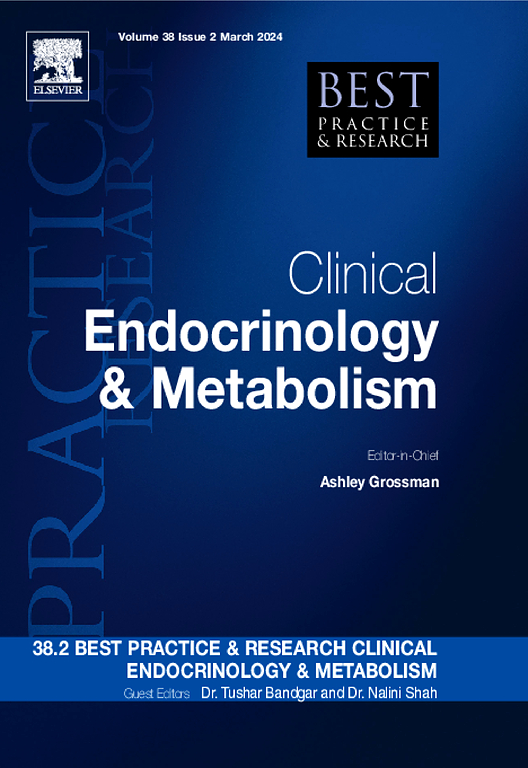Decoding craniopharyngioma: From mechanisms to therapy
IF 6.1
1区 医学
Q1 ENDOCRINOLOGY & METABOLISM
Best practice & research. Clinical endocrinology & metabolism
Pub Date : 2025-09-01
DOI:10.1016/j.beem.2025.102051
引用次数: 0
Abstract
Research from the last 15 years has profoundly advanced our understanding of craniopharyngioma, a challenging tumour of the sella. Genetically and histologically distinct subtypes — adamantinomatous (ACP) and papillary (PCP) — have been decoded. ACP is primarily driven by CTNNB1 mutations, leading to β-catenin accumulation and WNT pathway activation, while PCP is characterized by BRAF-V600E mutations. Sophisticated ACP mouse models and human studies have proposed a mechanism of senescence-driven pathogenesis in which senescent epithelial cells secrete growth and inflammatory factors that orchestrate a tumour-promoting microenvironment through paracrine signalling. Single-cell RNA sequencing has confirmed this view and revealed intricate tumour ecosystems. These foundational insights are now directly informing novel therapies. Promising targeted approaches, including BRAF/MEK inhibitors for PCP and small molecules disrupting the senescence-associated secretory phenotype (SASP) in ACP are transitioning from bench to bedside, heralding a new biology-driven era for patients.
解码颅咽管瘤:从机制到治疗
过去15年的研究已经大大提高了我们对颅咽管瘤的认识,颅咽管瘤是一种具有挑战性的鞍区肿瘤。遗传和组织学上不同的亚型-金刚瘤(ACP)和乳头状(PCP) -已被解码。ACP主要由CTNNB1突变驱动,导致β-catenin积累和WNT通路激活,而PCP则以BRAF-V600E突变为特征。复杂的ACP小鼠模型和人体研究提出了衰老驱动的发病机制,其中衰老上皮细胞分泌生长和炎症因子,通过旁分泌信号传导协调促肿瘤微环境。单细胞RNA测序证实了这一观点,并揭示了复杂的肿瘤生态系统。这些基本的见解现在直接影响着新的治疗方法。有前景的靶向治疗方法,包括治疗PCP的BRAF/MEK抑制剂和破坏ACP中衰老相关分泌表型(SASP)的小分子,正在从实验室过渡到临床,预示着一个新的生物学驱动的患者时代。
本文章由计算机程序翻译,如有差异,请以英文原文为准。
求助全文
约1分钟内获得全文
求助全文
来源期刊
CiteScore
11.90
自引率
0.00%
发文量
77
审稿时长
6-12 weeks
期刊介绍:
Best Practice & Research Clinical Endocrinology & Metabolism is a serial publication that integrates the latest original research findings into evidence-based review articles. These articles aim to address key clinical issues related to diagnosis, treatment, and patient management.
Each issue adopts a problem-oriented approach, focusing on key questions and clearly outlining what is known while identifying areas for future research. Practical management strategies are described to facilitate application to individual patients. The series targets physicians in practice or training.

 求助内容:
求助内容: 应助结果提醒方式:
应助结果提醒方式:


